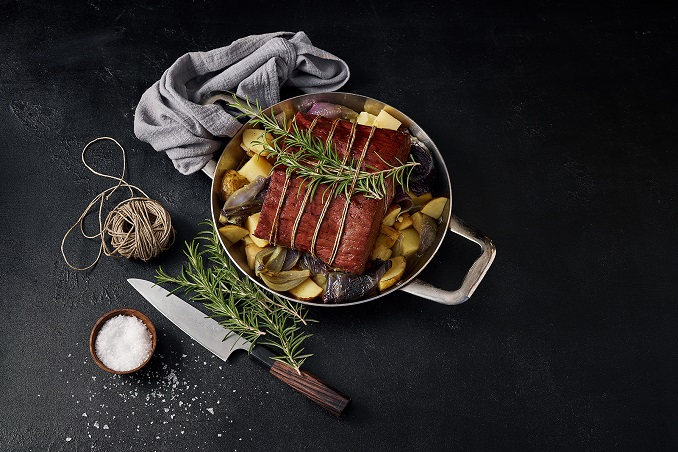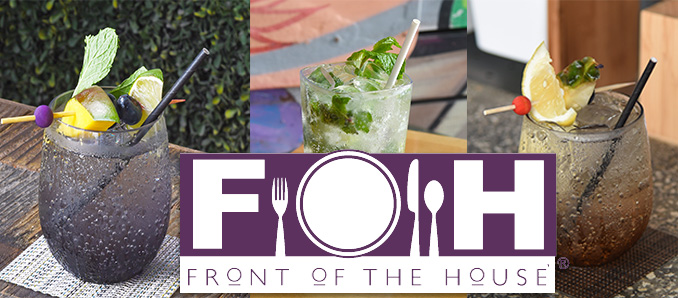If one had to select the two biggest trends in the food industry for the rest of this decade, they would be sustainability and innovation. We passed the 7.6 billion people-on-the-planet mark in 2019, and nine or even 10 billion is just around the corner. We need more food, but we also don’t want to chop down any more rainforest to grow it on. Demand for meat is soaring in recently-wealthy places with massive populations – China being the biggest of them. Increasingly sophisticated consumers want high-quality, environmentally-friendly nutritious food for reasonable prices… and oh, they want it fast as well. How to reconcile all these seemingly opposing needs? Is it possible? Well, we’re just going to have to get creative, and that’s exactly what the companies listed here are doing – each helping start or optimize trends that could make a big difference.
Trend one: Going High-Tech
We aren’t going to start a beef with vegans here. Most people like the taste of meat, beef in particular, and that’s not likely to change. What is changing is the earth, due to our love of beef. With cows drinking up more freshwater than humans and needing more space than is available, either we tear down more forests for grazing pastures and growing soybean feed, or we raise prices significantly. Steak could become rare (pun sort-of intended). Already on the market are plant-based copycats. Some of them are pretty darn good but lack a certain something. Israeli start-up Redefine Meat is hoping to find that X factor by 3D printing beef. Their goal isn’t making vegans happy. It’s to make meat by, “applying proprietary 3D printing technology, meat digital modeling, and advanced food formulations to produce animal-free meat with the appearance, texture, and flavor of whole muscle meat.” These guys are going way beyond “veggie burgers.” They want you to taste meat, cuz… you know, it’s delicious. This company went so far as to assemble top chefs and butchers during the testing phase, getting these full-on meat professional’s OK on the taste and texture. The amount of high-tech elements used in the creation process of this “alt-meat” is mind-boggling – it’s a unique mix of simple science, artificial intelligence, and the main wonder: 3D printing that’s evolved enough to give this alt-meat the multi-layers needed to get your taste buds on board. Conclusion: Consider current tech advances and brainstorm how they might be applied.
Trend two: Sensible Cycles
Brew Dr. is a Portland-based company with a perfectly circular business model. This “zero-waste” idea could be – at least to some degree – adopted by a lot of others in the food and beverage industry. It starts with thinking about the materials or ingredients that make up your product. Brew Dr. sells tea, kombucha, and distilled spirits… not the likeliest of combos. But it makes sense when you consider that they use their tea to make their kombucha and the alcohol that’s produced during the kombucha fermentation process is turned over to its distillery to be transformed into gin, absinthe, and other liquors. Smart, yeah? Costs are reduced and waste eliminated to zero – or at least near-zero – by using this sensible cycle system. Conclusion: Think about how ingredients could be repurposed and you might find there’s even money in it.

Trend three: Being Willing to Share
Speaking of pizza, Xintiandi is a cool spot for foodies in Shanghai, China, and – like most areas with a lot of restaurants – it features more than one place where you can get good pizza. No pizzeria uses up all their ingredients at the end of a day, and some of it really can’t or shouldn’t be refrigerated and used again… especially if you want your food to taste good. So, why not pool the leftovers? The unused ingredients are combined and become “RePizzas,” which is the name of the brand that offers over 200 flavors, every night. All made from combined leftovers. Some people hide the “secret sauce” in a vault, but these entrepreneurs are making money – and reducing waste – by sharing. For a rather unusual way to share, try Tree by Naked, a Japanese VR restaurant where you’ll share your meal with VR farm animals bizarrely dressed in tuxedos, while an audio track, light show, and wind machine help share an experience meant to represent “the journey of life.” Hard pass? That’s OK. We understand. Conclusion: Pooling resources is smart. Cows in tuxes, less so.
Trend four: Staying Sober is Cool Now, Dude
Younger people may have watched their parents recover from too many hangovers. All the research shows heavy drinking by people born around the turn of the millennium is way down, like you in 1999 on that bathroom floor at that party at… Ok, let’s not talk about it. The non-alcoholic beverage market – including “zero” beer – is spiking. Big names like Heineken are pushing various ‘0.0’ options hard, but so-called craft breweries are also getting in on the act. Some are replacing alcohol with THC, but that’s only legal in a few places. And it’s not only skipping the booze that’s generating a buzz, bars, and nightclubs for sober people are a thing, with some saying it’s more fun to talk to people high on life – and who don’t slur their words. We’ll let you be the judge of that. In any case, ‘cheers’ to sobriety and drinks other than soda you can order at a bar. Conclusion: Health-consciousness is huge and definitely spills over into the alcohol industry.







